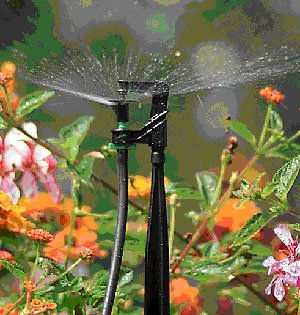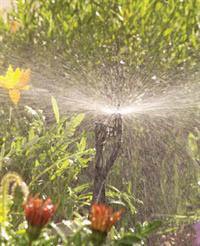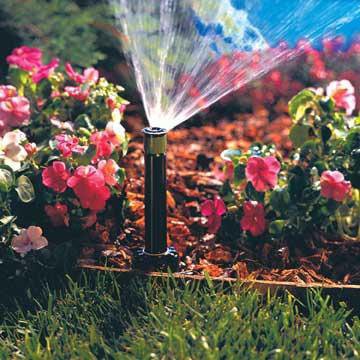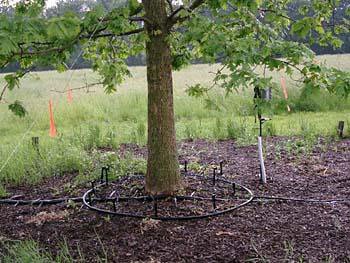what is a drip irrigation system
What is a drip irrigation system? Is there any real difference between drip irrigation and micro-irrigation? Why would I want to use this type of irrigation system? If these are questions you have asked yourself, keep reading for some answers.
Drip irrigation refers to any water system that utilizes a slow moving supply of water released slowly and directly to the soil. These methods allow a more precise control of soil moisture, eliminate over spraying onto surrounding hard surfaces such as sidewalks and foundations, and can be extremely effective in areas concerned with water conservation. A drip irrigation system for landscaping applications is most typically installed to water shrubs, trees, hedges, and foundation plantings. They can also be an effective method for delivering water to agricultural crops.
To some, there is a distinct difference between a drip irrigation system and a micro-irrigation system. They would categorize all low-pressure methods of delivering water to the soil by any type of a “drip” method, whether by porous pipe or emitter tubes, as drip irrigation. This would place any low-pressure spray or misting applications in the micro-irrigation category. Others would refer to all of these methods as drip-irrigation, while even another, possibly more cutting edge, group would argue that drip irrigation is an out-dated term, and all forms should be called micro-irrigation. I would argue that the term is irrelevant as long as you acquaint yourself with all of the possible options and the benefits of each.
On the other hand, do not become confused concerning micro-irrigation and sprinkler systems. Although ground level micro-irrigation systems use spray heads, they differ greatly from a traditional sprinkler system spray head.

Micro Irrigation |

Micro Irrigation |

Sprinkler Spray Head |
|
A sprinkler system is designed to deliver a large amount of water during a set period of time. This method often results in water run-off and overspray. At times, it may seem that the surrounding pavement actually receives more water than the intended plants. In contrast, spray heads installed in a micro-irrigation system are designed to deliver less water at more frequent intervals, allowing water to spread slowly underground in a more lateral flow. The ground maintains a more uniform level of moisture, lessening the possibility of root rot.
One of the greatest advantages of any type of drip irrigation system is its high level of efficiency. With the move towards “green” consciousness, water conservation has become more popular across America, not just in the more arid regions. At an efficiency rating of over 90%, compared to a typical sprinkler system’s rating of around 75%, a drip system will save a significant amount of water over time. |

|
However, there are other advantages to drip irrigation system that might be more important to the typical do-it-yourself homeowner. A basic drip irrigation system is easy to design, especially if you keep in mind the limitations associated with both the amount of water pressure available and the length of pipe it is possible to run. Any homeowner that has started a project and found themselves in over their head will appreciate the ease of installation, while the low expense associated with a drip irrigation system may be valued most by the frugal homeowner. No special skills or tools are needed, and you don’t even have to dig a trench. And for an additional money-saver, goof plugs can be purchased to correct any accidental holes you might make. |
What ever your reason for choosing any method of drip irrigation, you will have made a choice that will benefit you, the environment, and your plants.
|